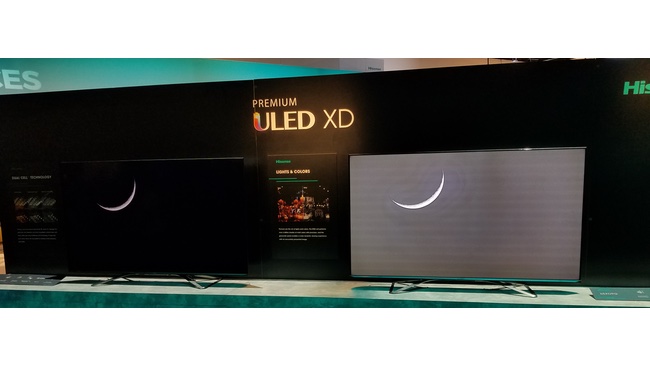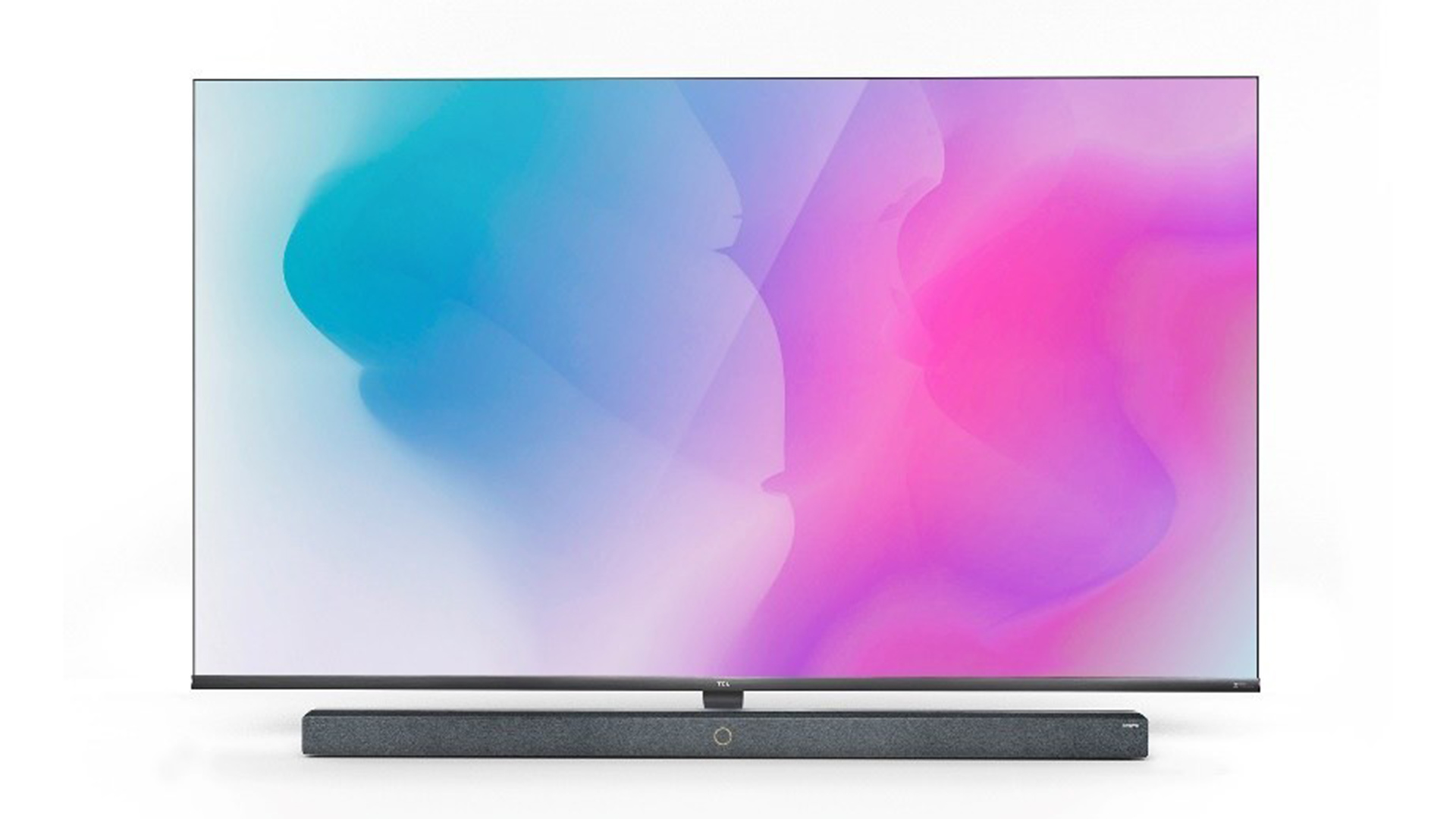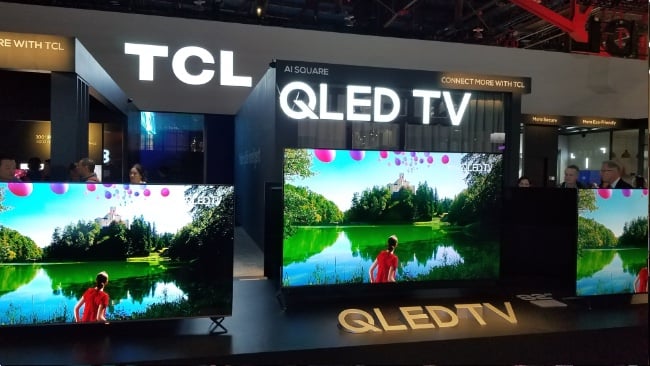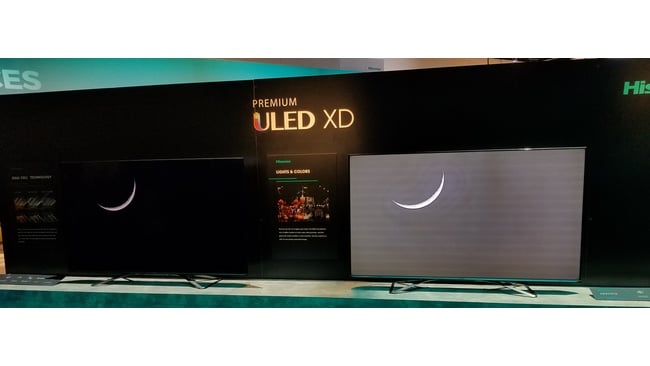
 The 8K TCL miniLED based television will be available later in 2020
The 8K TCL miniLED based television will be available later in 2020
The drive for 8K continues unabated, but these new technologies offer a lot more advantages than just resolution, and you'll be able to purchase televisions that use some of them later this year.
8K was clearly a high-profile TV trend at CES 2020 but fuelling TV advancements are several underlying display technologies that will continue to drive innovation and, hopefully, sales in the future. I am talking about new direct-view displays powered by microLEDs, LCDs powered by miniLED backlights and an alternative LCD architecture called dual-cell. All these are being used to make 4K and 8K TVs. In this part, I will discuss miniLED TVs and dual-cell TVs. In Part 2, I will turn our attention to microLED displays featured at CES 2020.
miniLEDs
| **LCD Architecture** | **Number of zones** |
|---|---|
| Edge or direct | 1 to dozens |
| Full Array Local Dimming (FALD) | tens to hundreds |
| miniLED backlight | thousands to tens of thousands |
| Dual Cell | millions |
As the table illustrates for LCD displays, there is a clear reason to adopt these new technologies – more dimmable zones. More zones are needed to allow better dynamic range via double modulation of the light – all to try to get the black level control offered by OLED displays.
Remember, OLEDs are emissive displays, so they have great blacks at the pixel level, meaning there are no halos around bright objects on black backgrounds. Stars in a black sky are best on OLED but can disappear or have halos on LCDs – all depending on how many dimmable zones there are and the algorithms to control them.
LCD TVs today commonly employ edge or direct backlighting, or FALD architectures. MiniLEDs take this a step further in two ways: they reduce the size of the LEDs in the backlight and increase their number. This not only reducing haloing but often is coupled with increases in brightness and 8K panels.
MiniLED backlights can be fabricated by assembling them on a Printed Circuit Board (PCB) and using passive multiplex drivers in an architecture that is very similar to the modules in LED video walls. TCL already offers the 8-series using this approach. In the US, this means the Q825 series which is a 4K resolution TV with 25K minLEDs and over 1000 dimmable zones. The 65” goes for around $2K and the 75” for around $3K.
At CES, TCL announced the next generation of miniLED technology. Branded as Virdrian, this uses a glass substrate with an active matrix of TFTs to drive each miniLED. This architecture fits very well into the existing LCD manufacturing operations as glass substrates with an active matrix array of TFTs are needed for the LCD cell as well. The new TV (Q838) will arrive in the US sometime in 2020 in 65” and 75” sizes and 8K resolution. Like the Q825, it will feature 25K miniLEDs and also be a quantum-dot model with wide colour gamut. It will be certified by the 8K Association.

Konka used CES to announce its plans to now offer TVs in the US in 2020. It will start with value and mid-tier TVs, but will soon offer premium products as well. For example, they showed a 75” 8K miniLED TV that uses 40K miniLEDs with 10K dimmable zones. This is already being sold in the China market.
Another Chinese TV brand, Changhong, also showed a 75” 8K TV but with only 5K miniLED and 5K zones. This is scheduled to launch in the China market in the spring.
Prototype miniLED TVs were also shown by Vizio, LG Electronics and TCL. The Vizio demonstrator was an 85” 8K model with 2000 zones, while the LG prototype was an 80” 8K model with 4000 nits of luminance. TCL showed a 100” 8K demonstrator with 4000 nits as well, which could be a 2021 product.
You may think that 4000 nits is overkill, but most content will still have average luminance levels that are not that much different from the current high-end TVs. Peak luminance is needed to give specular highlights the high sparkle that adds a dimension of realism to the image. Plus, there is now no limitation to rendering very bright, highly saturated colours – something OLEDs struggle with.
Dual-cell
Hisense is the lead company developing dual-cell TVs. This technology is already being used in professional colour grading monitors like the Sony BVM-HX310, but reducing the cost to make an affordable TV has been a big challenge – until now.
The idea behind dual-cell is to insert a second monochrome LCD panel between the main full-colour LCD and the backlight. This allows the monochrome panel to act as a second modulator with the number of dimmable zones now determined by the resolution of this monochrome panel.
In the 31” Sony HX310, each panel is 4K resolution and the full-screen peak luminance is 1000 nits. At CES, Hisense showed the 65” XD9G TV (1000 nits, quantum dot), which is apparently on sale now in China. This uses a 4K resolution full-colour panel and a 2K monochrome panel, thus delivering around 2 million dimmable zone (1 zone for 4 colour pixels). This should come to the US by Q4 ’20 and will be priced about $100-$200 lower than a 65” OLED TV at that time. They are delaying the US launch on purpose to wait for the introduction of the new OLED models so they can set the price point.
The Hisense U9E series looks to be similar but with 1500 nits (65”, 75”, 98”). Hisense also showed a 32” 4K dual-cell monitor as a prototype.
They also showed an 8K dual-cell prototype, the HZ5U9E-Pro, at 75 inches. This not yet on sale in China and there are no firm plans to bring it to the US in 2020. The monochrome panel is 2K, but in theory, could be 4K or even 8K. Contrast is rated at 150,000:1 – about 100 times better than a typical LCD panel. This is illustrated in the photo below.

Will other TV brands follow Hisense’s lead? That remains to be seen, but I suspect they are waiting for market reaction before deciding.
In Part 2, we will discuss developments in microLEDs at CES.
Tags: Technology


Comments